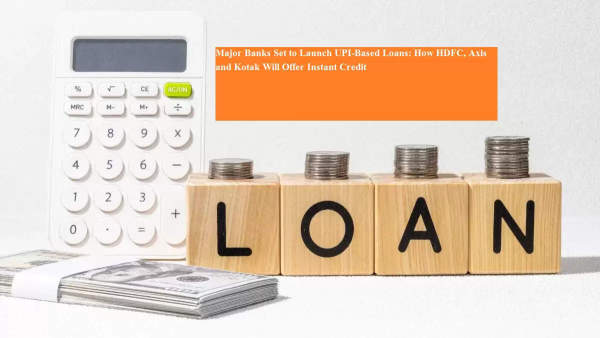
A major shift in India’s digital lending landscape is on the way, as some of the country’s largest private-sector banks prepare to introduce loan services directly through UPI. According to reports, HDFC Bank, Axis Bank and Kotak Mahindra Bank are gearing up to launch the UPI Credit Line feature, enabling users to access instant short-term loans within their UPI apps.
With the Reserve Bank of India issuing fresh operational guidelines and the digital credit ecosystem gaining strong momentum, the long-awaited credit line option on UPI is finally ready to expand nationwide.
For millions of UPI users, borrowing money may soon be as simple as scanning a QR code or making a regular payment. After months of testing and limited participation, major banks are now preparing to operationalise the loan feature on UPI, bringing formal banking credit to everyday digital transactions.
Industry sources quoted by ET reveal that the banks are now setting up partnerships with leading fintech startups to scale this product. As digital payments continue to grow at a record pace, the addition of credit services is seen as the next big evolution for UPI.
This expansion could transform how individuals access small-ticket loans for daily expenses, emergencies and purchases.
The credit line on UPI was first introduced by the National Payments Corporation of India (NPCI) in 2023. However, despite its potential, the product failed to gain traction for nearly two years, mainly because large banks did not immediately adopt it.
Only a few smaller financial institutions—such as Karnataka Bank and Suryoday Small Finance Bank—began offering credit lines through UPI, in partnership with fintechs like Navi and Paytm, allowing customers to access digital loans.
Now, with major private banks stepping in, the feature is expected to grow rapidly.
Axis Bank and HDFC Bank, as per industry insiders, are working closely with fintech startups to speed up the launch of UPI credit lines. Companies like Navi, Super.Money and SalarySe are partnering with these banks to deliver faster onboarding, verification and disbursal processes.
Kotak Mahindra Bank, meanwhile, is already experimenting with similar products on its Kotak 811 digital platform, in partnership with Super.Money.
Banks see the UPI credit line as a highly effective way to reach first-time borrowers and deliver micro-loans. Customers who borrow small amounts and repay on time can eventually develop strong financial profiles, making them eligible for higher loan amounts in the future.
Under the new system, customers will receive a pre-approved credit limit, which they can use for payments through any UPI app.
Here’s how it works:
Users are given a sanctioned credit limit by the bank.
They complete onboarding and basic verification through the UPI app.
Payments made via UPI can draw directly from the credit line.
Repayment terms and due dates will be displayed within the app.
Industry estimates suggest that around 3–4 lakh UPI credit lines have already been issued during the pilot phase. While transaction volumes remain low, experts expect rapid growth once large banks officially begin offering the feature.
The slow rollout has largely been due to clarity issues. Banks reportedly held back until the RBI and NPCI provided detailed rules covering:
Interest rate structure
Grace periods
Repayment rules
Fee and charge mechanisms
With these guidelines now in place, banks are confident about launching the feature at scale.
However, there is one key concern: default risk. Since these are mostly small-ticket loans, banks worry that repayment delays or defaults could make recovery difficult, especially without collateral. As a result, banks are taking measured steps and relying on robust fintech partnerships for underwriting and risk assessment.